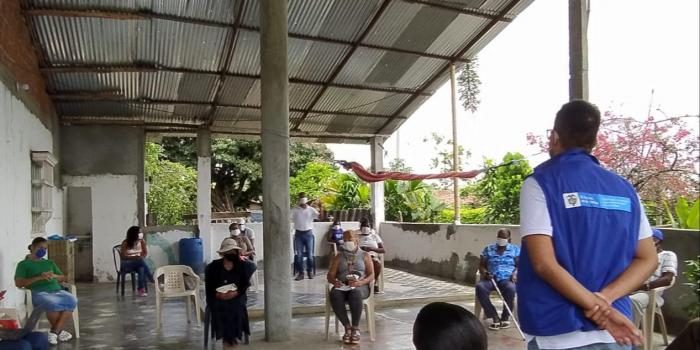
Peasant communities validated the diagnosis of damage suffered by the war in Cauca
Population affected by the conflict of 93 villages and nine townships of the municipalities of Almaguer, Caloto and Cajibío in Cauca, seeks to advance in its comprehensive repair.

The subjects of "Collective Repair Community Municipality of Almaguer; El Palo rural district, Caloto; Community Pedregosa, Campo Alegre rural district and El Rosario de Cajibío", built and validated the damage diagnosis document, in which they collected the experiences that, in the framework of conflict, affected its essence, uses and customs, seeking to build a model of Collective Reparation that would correctly remedy all the effects caused by the war in Cauca.
The director of Cauca Territorial Victims Unit, Dan Harry Sánchez Cobo, stated that the process that these peasant communities go through is part of the Damage Diagnosis phase, “which represents the backbone of the reparation collective model, on which the correctness dependsThe formulation of actions and measures aimed at the integral reparation of the damages caused to the group".
The official added that “the peasant communities show themselves as a strong population in the face of all the adversities they have experienced, finding means to confront and resist violence, not only for themselves but also in order to keep the community united, ready to receive everything that is for the benefit of their collective, through the Victims Unit as a means of repairing their social network, with feelings of hope that comfort their sense of belonging”.
This process of construction of the Collective Repair Plan seeks to benefit around 23.246 people affected by the conflict in 93 villages and nine townships of the municipalities of Almaguer, Caloto and Cajibío, represented in three Subjects of Collective Repair that have been included since 2016 in the Single Registry of Victims.
(End/MVR/DFM/LMY)






